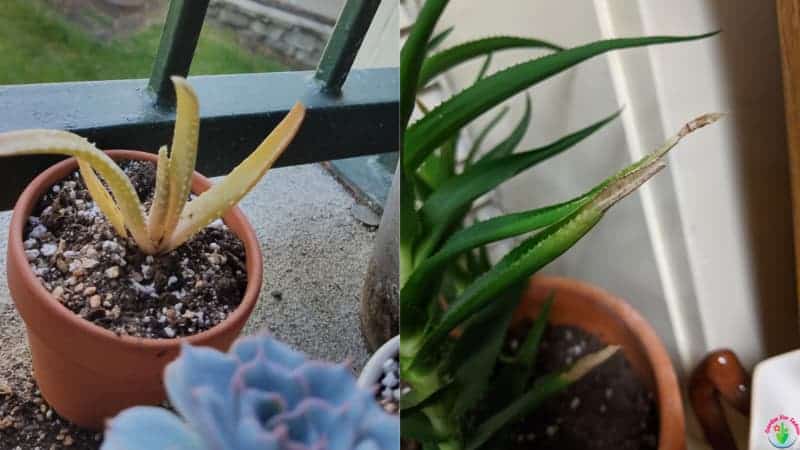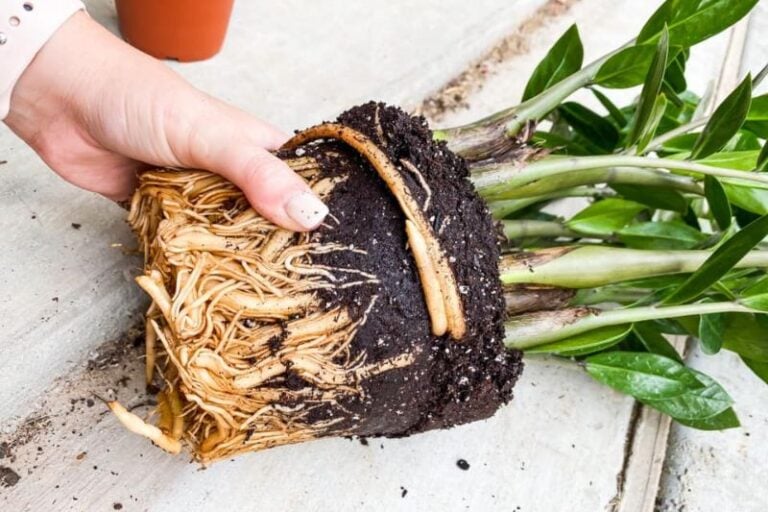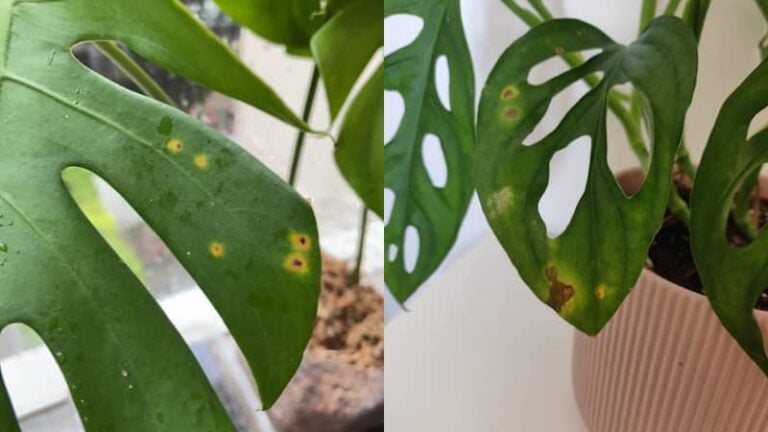Aloe vera is a common indoor succulent, prized for its unique look and healing properties. It originates from South Africa, where moisture usually comes during the rainy season.
Over its evolution, aloe has adapted to go a long time without water. But proper watering is still needed for the plant—it’s the key to its health. In this article, I’ll tell you exactly how to water aloe in a home environment.
Contents
How To Determine When You Need To Water Aloe
The leaves of aloe are fleshy and juicy, storing water inside. The plant tolerates drought well. That means you shouldn’t overwater it at home, and definitely not drown it. It’s low-maintenance, but it still needs some care—especially when it comes to watering.
To understand if it’s time to water, take a look at the soil in the pot. If the soil block is dry, it’s time to water. If it’s slightly moist, don’t water. Wait until the soil is completely dry.
Note!
Thin, dried-out aloe leaves are a sign that it’s lacking moisture.
With What To Water Aloe For Beauty And Health
This tropical native gets very warm rain in the wild, so you’ll want to use rainwater or warm water for watering. Don’t water with cold tap water, especially if it’s chlorinated. You should let chlorinated water sit for at least 24 hours so the chlorine evaporates and any harmful impurities settle to the bottom.
In winter, it’s super handy to use melted snow water. Collect snow from away from roads in a bucket and leave it in the room next to a radiator.
When the snow has completely melted and the water reaches room temperature, you can confidently water your aloe. For this extra-pure water, your aloe will thank you with better looks and immunity for the long haul.
The water you use should be high-quality and free of impurities. Periodically, it’s a good idea to acidify the water with citric acid Check Price on Amazon. For each quart of water (1 L), add about 0.11–0.18 oz (3–5 g) of it.
Alternatively, frozen water works perfectly:
- Let tap water sit for 24 hours.
- Gently pour it into a sealed bottle, leaving any sediment behind.
- Freeze the bottle until the water turns to ice.
- Thaw it in a warm room.
Once it’s fully melted and at room temperature, go ahead and use it to water your plant.
Recommendation
Some growers recommend adding a few drops of aloe vera gel to the watering solution. This can boost your plant’s immunity and speed up growth.
Two Ways To Water An Adult Indoor Aloe
Watering is infrequent but thorough—you need to fully soak the soil. Here are two watering methods for this succulent:
Top watering with a watering can: Water from above directly onto the soil in the pot. Try not to splash the leaves. Water until it starts to run into the saucer underneath, then be sure to drain any excess, especially in winter. Pouring water into the rosette can lead to rot, and in the worst case, kill your aloe.
Note: The advantage of this method is that it thoroughly wets the soil so moisture reaches all the roots. The downside is that if you pour too little, the bottom layer stays dry and the absorbing roots don’t get water, so the leaves start to dry out.
Bottom watering via a saucer. Pour water into the saucer or submerge the pot in a container of water for about 30 minutes. Then remove the pot or drain the saucer.
The advantage here is that the lower roots get moisture and nutrients aren’t washed out of the soil. The downside is if there’s a large layer of drainage at the bottom, water may struggle to reach the roots.
How To Water Your Succulent When Repotting
You should repot aloe every three years. Stop watering the plant for 1–2 weeks before repotting. There are two repotting methods: by replanting with the soil ball intact, or by fully replacing the soil and inspecting the roots.
- If you repot with the soil ball intact, water thoroughly immediately after repotting.
- If you completely replace the soil, water only on the third to fifth day. This gives the plant time to recover. Any minor root injuries will heal naturally and won’t invite rot or infection.
How Often To Water Aloe In Different Seasons
In aloe’s native land, rains are heavy but irregular. So it’s best to recreate similar conditions at home. Water should always be warm.
If you don’t have time to heat it, leave your container of water in the warmest spot for a few days and it will warm up on its own.
| Season | Watering specifics |
| Winter | Before watering in winter, gently warm the water so it’s about 12.6–14.4 °F warmer than room temperature (7–8 °C). Water moderately, no more than 1–3 times a month, in the mornings. This routine works if you’ve provided a rest period for the plant.To let your aloe enter dormancy, lower the air temperature to 53.6–59 °F (12–15 °C). If the room stays warm and the plant keeps growing slowly, water as the soil dries in the pot—all the way to the bottom. |
| Spring | The ideal water temperature is 68–73.4 °F (20–23 °C). Water generously. It’s key to remember that you shouldn’t water more often than once every 1½ weeks. Plan to water in the evening. |
| Summer | In summer, water with water up to 95 °F (35 °C). Water generously, no more than 1–2 times a week. It’s best to water in the evening. |
| Fall | And finally, here’s how to water aloe in fall. Water moderately, no more than once every 7–10 days, in the morning. |
Signs of Improper Watering: 3 Common Mistakes And Their Consequences
- With excessive watering, the leaves become overly soft, they yellow, and look unkempt and unhealthy. Water will stand in the saucer.
- If you water with cold tap water, the leaves may suddenly drop off.
- With insufficient watering, the foliage thins, loses its bright color, and dries out. If you don’t water for a long time, the plant will die. While aloe is a succulent, it doesn’t respond well to a lack of moisture. Everything should be in moderation, even watering!
When watering aloe, remember this rule: it’s better to underdo it than to overdo it! If you don’t stick to this, the leaves will start to change color.









